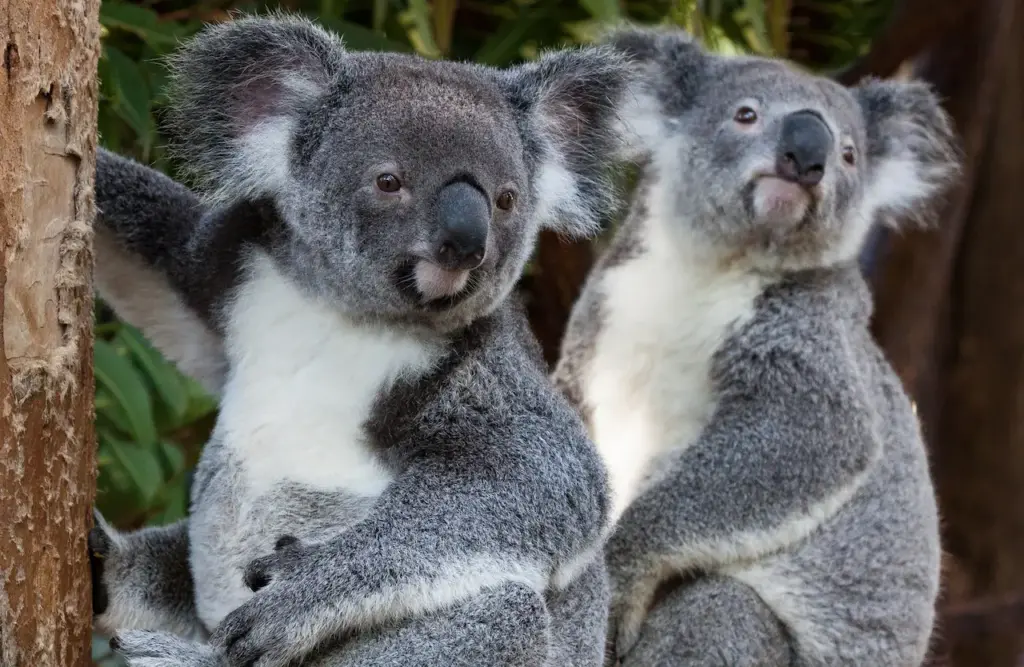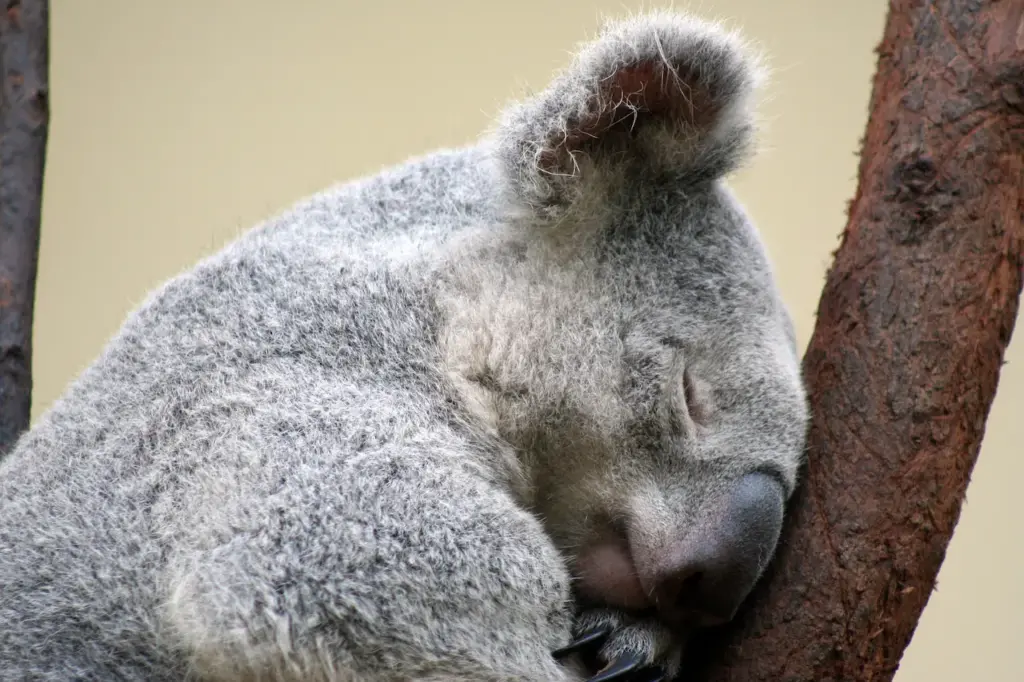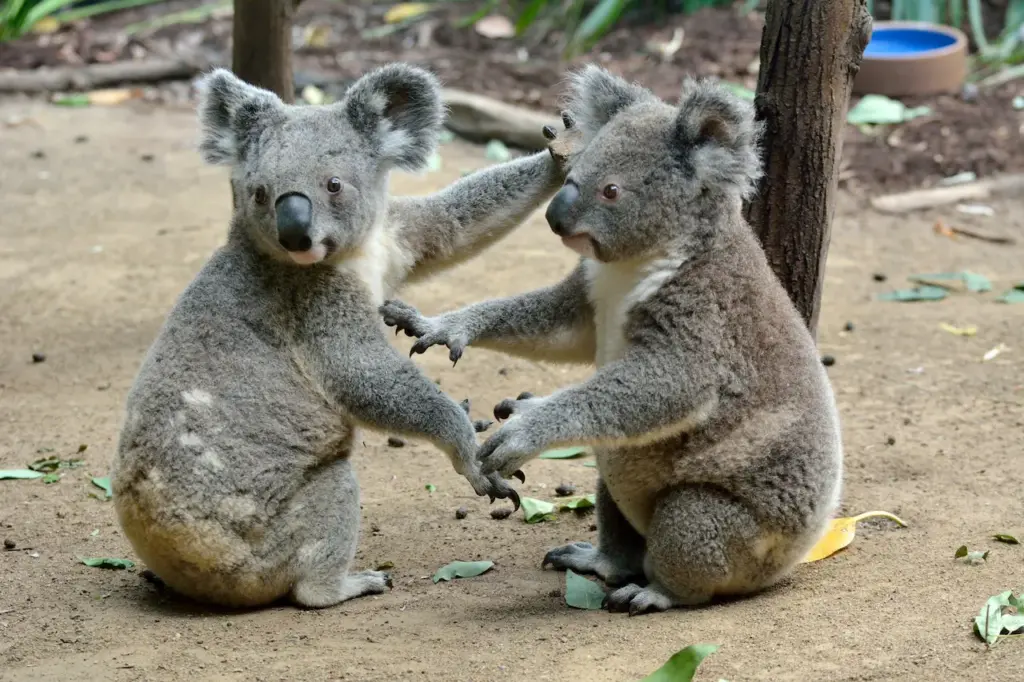What Eats Koalas?
Categories
- Accipitridae (1)
- Acrididae (1)
- Algae (2)
- Alligatoridae (1)
- Amoebidae (1)
- Amphibians (3)
- Anatidae (1)
- Anguillidae (1)
- Arachnids (2)
- Bears (2)
- Big Cats (3)
- Birds (13)
- Bovidae (5)
- Bufonidae (1)
- Camelids (1)
- Cameras (1)
- Canines (13)
- Caridea (1)
- Carnivora (10)
- Castoridae (1)
- Cats (5)
- Cebidae (1)
- Cephalopod (1)
- Cervidae (2)
- Cetacean (1)
- Chondrichthyes (1)
- Crocodilia (2)
- Crustaceans (4)
- Culicidae (1)
- Cyaneidae (1)
- Dasypodidae (1)
- Dasyurids (1)
- Deer (1)
- Delphinidae (1)
- Desktop (1)
- Didelphidae (1)
- Dinosaurs (1)
- Dogs (13)
- Dolphins (2)
- Echinoderms (1)
- Education (10)
- Elephantidae (1)
- Equine (1)
- Erethizontidae (1)
- Erinaceidae (1)
- Farming (1)
- Felidae (5)
- Fish (5)
- Food Chain (31)
- Food Web (2)
- Formicidae (1)
- Frugivore (1)
- Gaming (1)
- Gastropods (1)
- Giraffids (1)
- Great Apes (2)
- Health Conditions (3)
- Herbivore (4)
- Hi-Fi (1)
- Hippopotamidae (1)
- Hominidae (1)
- Insects (10)
- Invertebrates (2)
- Keyboards (1)
- Laptops (1)
- Leporidae (1)
- Mammals (23)
- Marsupials (4)
- Mephitidae (1)
- Microchiroptera (1)
- Mollusks (2)
- Mongoose (1)
- Muridae (1)
- Nocturnal Animals (1)
- Odobenidae (1)
- Omnivore (2)
- Phasianidae (1)
- Phocidae (1)
- Plankton (1)
- Plants (2)
- Primate (1)
- Ranidae (1)
- Reptiles (7)
- Rhinocerotidae (1)
- Rodents (5)
- Salamandridae (1)
- Scarabaeidae (1)
- Sciuridae (2)
- Sharks (1)
- Shellfish (1)
- Sound (1)
- Spheniscidae (1)
- Suidae (1)
- Superfamily Papilionoidea (1)
- Theraphosidae (1)
- What Eats (5)
Koalas, the Australian marsupials, mainly eat eucalyptus leaves and have a pronounced bear-like look.
Coastal regions in eastern and southern Australia are home to koalas, woods, and mangrove swamps.
It’s interesting to note that they are becoming more widespread over the continent. Koala numbers are threatened not just by climate change but also by predators. These predators hunt them to defend their territory or for food. In this article, we are going deep to address many predators of koalas.
Table of Contents
ToggleThe Predators That Hunt Koalas
Dingo
Australia’s native dingo is a wild dog said to have sprung from domestic South Asian canines. Dingoes can have colors ranging from sandy yellow to reddish-brown to almost black, and they are often around the same size as medium-sized domestic dogs.
They usually pursue their target until they can attack at night. To kill koalas, dingoes frequently bite the animal in the neck and throat while still alive.
Dingos may devour a koala’s meat right after it is killed, or they may drag it away to eat later in privacy.
Foxes
A member of the Canidae family, which also includes wolves, jackals, and domestic dogs, foxes are tiny to medium-sized carnivorous creatures.
They can grab prey with solid teeth, large snouts, and characteristic white tips on their tails. Foxes hunt their prey throughout the day and at night using a combination of their senses of smell and hearing.
Usually, they would track their prey until it was close enough to attack before making a sudden move. Foxes frequently lurk beneath koalas they are hunting until the ideal opportunity to ambush them presents itself. The time when koala cubs are most at risk is when their moms depart the nest.
Because of their size and thick fur coats, koalas are not their preferred diet, but if nothing else is available, they could prey on the fragility of this sluggish mammal.
White-Lipped Python
A vast, nonvenomous snake species endemic to Australia and New Guinea is called the white-lipped python.
They are among the few snake species that pursue their victim on the move instead of ambushing it. White-lipped pythons typically hunt throughout the night because they have such good night vision.
Frequently, they scale trees and wait for koalas to pass by. When they do, they swiftly attack with their strong teeth and choke or shock them to death. White-lipped pythons consume small animals, birds, reptiles, and other snakes besides koalas.
Domestic Dog
A canine species that humans have tamed is known as a domestic dog. Usually maintained as pets, they are bred for specific traits like temperament and size.
Dogs seek prey by using their extraordinary sense of smell. By utilizing their noses to detect minute odors in the surroundings, they will frequently use their noses to locate their objective.
Additionally, domestic dogs can be trained to seek specific objects, such as truffles or other food sources, or to hunt for wild wildlife. Domestic dogs frequently cannot resist the strong prey urge to pursue a running animal while tracking koalas. Often, they murder them just out of instinct.
Amethystine Python
The amethystine python, with a length of up to 26 feet, is known as one of the longest snakes in the world. It is usually found in Australia, the islands of Indonesia, and New Guinea. Its design, which consists of a black backdrop with white lines running down its back and yellow dots on it, is as unusual as its size.
Ambush predators, such as amethystine pythons, hunt by waiting for unwary prey and then suddenly and violently attacking.
They mainly eat tiny animals like rats and bandicoots, but if given the chance, they have been known to eat wallabies and koalas. These snakes often wrap around their prey until they suffocate, then devour them whole while hunting koalas.
Australian Barn Owl
An owl species found only in Australia, New Guinea, and some areas of the Solomon Islands is the Australian barn owl (Tyto Alba). With characteristic heart-shaped faces and bright eyes, these owls range from tiny to larger.
The usual hunting strategy for barn owls is to hunt at low altitudes over wide-open spaces, using their keen sense of hearing to identify activity from a few meters away. When their prey is discovered, they swiftly descend to seize it with their sharp claws, either to eat it right away or to transport it to a perch where they may eat slowly.
While some hunters prefer to hunt at night, others may take advantage of the daylight hours if plenty of prey items are available.
Their primary food sources are tiny animals, including fish, amphibians, reptiles, rodents, and other birds, but they have also infrequently been observed consuming koalas!
Wedge-Tailed Eagle
The wedge-tailed eagle, a big predatory bird, is found in New Guinea, Indonesia, and Australia. Their remarkable wingspan is nine feet, which makes them Australia’s largest raptor!
The feathers on the back of wedge-tailed eagles are brownish, becoming lighter towards the breast.
When hunting, wedge-tailed eagles swoop over a region in search of small mammals like hares or rabbits.
They can also track other birds, such as cockatoos and parrots. They will quickly descend from their perch, seize any possible prey with their talons, and then take off to consume it elsewhere. Although they don’t particularly enjoy eating koalas, they have also been known to assault them.
Goanna
Goanna, known as giant lizards, are found in Australia and New Guinea and are six to six feet long.
Goannas utilize their keen sense of smell and sight to locate their prey while they are in quest of food. After spotting possible prey, they would calmly await the right opportunity to ambush from hiding places such as clefts in rocks or trees.
When hunting koalas, goannas also use ambush tactics. Reaching high into tree branches with their long necks, they catch unaware koalas napping or munching on eucalyptus leaves.
Unfortunately for koalas, the size advantage and strong teeth that can break through the bones of these formidable carnivores often overcome them.
Quoll
A quoll is a carnivorous marsupial endemic to Australia and New Guinea. There are six species of quolls, and the Eastern, Northern, Western, and Tiger quolls are the four that may be found in Australia.
Their coats can vary from black or brown to white or spotted, and their sizes can range from mice to medium-sized cats.
When hunting, quolls approach their target silently and then use their keen claws and fangs to strike.
Their primary food sources are small animals like rats, mice, birds, reptiles, and amphibians, but when needed, they will also search for eggs and carrion.
Apart from these smaller animals, quolls may also kill juvenile koalas for food if they get the chance, which makes them one of the predators that can feed on this famous Australian mammal.
Conclusions
Koalas are renowned for being adorable and cuddly. Nevertheless, they are hunted and killed by other creatures who might not feel the same way that people do.
Because they aren’t very adept at protecting themselves, koalas are frequently the targets of assaults.
Anything from pythons and crocodiles to dingoes and tame dogs can be their predator. This tutorial should have taught you all there is to know about koalas and how they relate to other animals and their prey.



